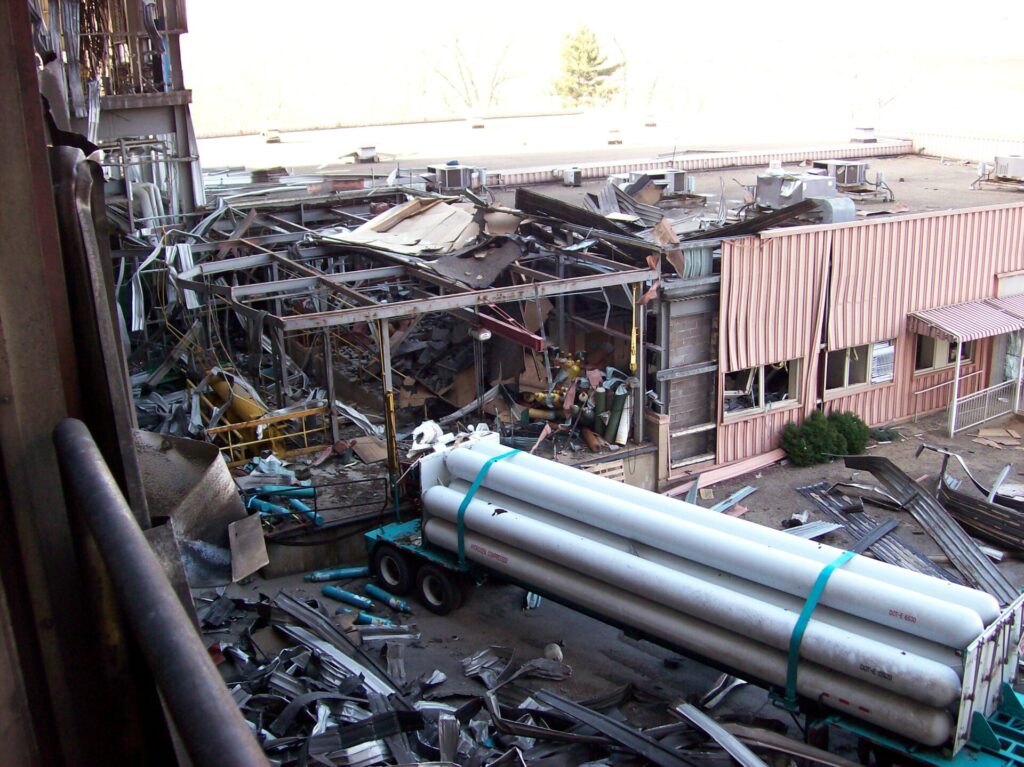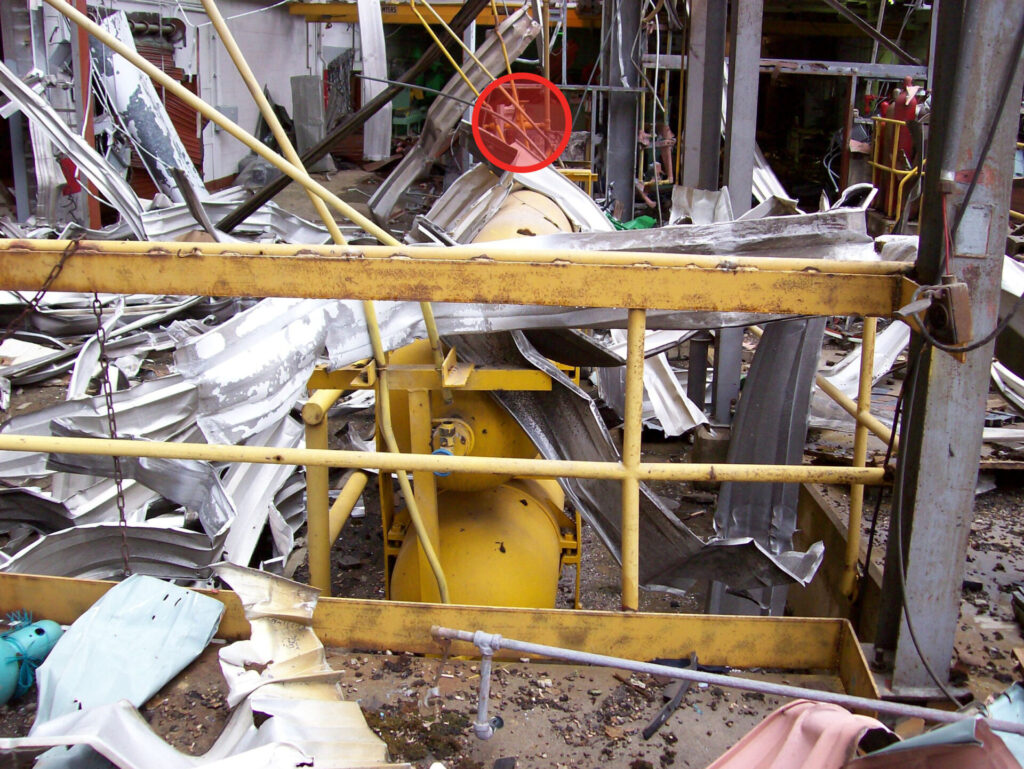Environment & Energy
Related: About this forumCase Study: Power Plant Hydrogen Explosion
Hydrogen is not a primary energy source. It is overwhelmingly made from dangerous fossil fuels, with an energy penalty, but is often marketed as if it were an energy source to greenwash these same dangerous fossil fuels. Generally the fossil fuel ads are accompanied by slick graphics, often accompanied with misleading pictures of large tracts of abused land featuring so called "renewable energy" industrial parks, even though the amount of hydrogen generated from so called "renewable energy" is trivial.
A Giant Climate Lie: When they're selling hydrogen, what they're really selling is fossil fuels.
The 2024 EIA World Energy Outlook indicates that in 2023, hydrogen combustion resulted in the release of 1 Exajoule of stored energy but was synthesized at a cost of 1 Exajoules of energy. (That the numbers are equal is the result of rounding; it takes more energy to make hydrogen than the energy value in it.) World energy demand in 2023 was 642 Exajoules.
(cf. World Energy Outlook 2024
Table A.1a: World energy supply Page 296.)
Hydrogen is an extremely dangerous material to use because of its poor physical properties, even for highly trained chemical engineers, because of its low viscosity, its incompatibility with metals, its aberrant Joule Thompson coefficient, its low explosive limits and its possession of the third lowest critical temperature of any known gas, the two gases with lower critical temperatures are both isotopes of inert helium, 4He, 3He, the latter formed by beta decay of tritium.
Here's a different kind of graphics, relating to a 2007 explosion of hydrogen at a power plant.

The caption:

The text and additional pictures related to this event are here: Case Study: Power Plant Hydrogen Explosion
We are now roughly half a century into hydrogen hype. In 2007 we were only about 30 years into the outbreak of hydrogen hype. Not much has changed in the last 20 years, much as not much changed in the previous 30 years. Hydrogen is not a source of primary energy, nor will it ever be.
Note: The hydrogen in this case was not intended as a fuel. Despite endless horseshit released to the contrary, the overwhelming use of hydrogen is not for fuel, since it is wasteful to do so, but rather for captive use, generally in the synthesis of ammonia, on which the world food supply depends, methanol, a solvent which is capable of being used as a fuel but seldom is (windshield wiper fluid contains methanol), and petroleum refining.
The hydrogen was being used to cool equipment at the power plant.
From the text of the Case Study:
Today, this tragic incident serves as a reminder of the unique hazards of hydrogen. The investigation uncovered valuable lessons learned, including best practices related to maintenance, system design, venting, and ventilation.
The following case study is based on a presentation given by Senior Mechanical and Forensic Engineer Daniele Murphy, Ph.D., at the Center for Hydrogen Safety (CHS) 2021 Asia-Pacific Conference. Barry Newton, Ph.D., served as the primary investigator on the original case.
Around 9 a.m. on January 8, 2007, personnel maneuvered a large tube trailer into position at the power plant. The trailer held ten cylinders filled with hydrogen at 2500 psi (17.2 MPa) which would be transfilled to two onsite storage vessels. These tanks could hold up to 15,000 cubic feet stored at 2000 psi, equating to approximately 35 kg of hydrogen.
The delivery was a routine part of daily operations at the plant, where the hydrogen would be used to cool its generators. Unfortunately, what happened that day was anything but routine. After a rupture disk failed, hydrogen lost containment in the vent piping and rapidly leaked into the air under an overhead awning. Soon after, the combustible mixture in the awning ignited.
The explosion resulted in the death of the delivery truck driver, who was killed as he ran back to his vehicle to turn off the hydrogen. Ten nearby plant personnel were also injured in the event, and the energetic explosion tore apart multiple structures at the plant...
The death toll from this hydrogen explosion, one death, is higher than the death toll related to radiation released as the Fukushima reactors since they were destroyed, along with a coastal city, by events related to a major Earthquake.
Details of the causes of this engineering failure connected with the explosion of just 35 kg of hydrogen are provided at the link for the case study.
Have a nice day tomorrow.
Turbineguy
(38,378 posts)Gasoline 23,000 BTU per lb.
Boom
Think. Again.
(17,983 posts)thatdemguy
(524 posts)Its is not what they are trying to make it be. The posts here are not taken well.
The most common source of hydrogen is nat gas, and guess what's left over after they get it out of mat gas, Co2.
NNadir
(34,664 posts)
The caption:
Progress on Catalyst Development for the Steam Reforming of Biomass and Waste Plastics Pyrolysis Volatiles: A Review Laura Santamaria, Gartzen Lopez, Enara Fernandez, Maria Cortazar, Aitor Arregi, Martin Olazar, and Javier Bilbao, Energy & Fuels 2021 35 (21), 17051-17084]
I referred to this graphic, and reproduced it, discussing a paper in the journal I discussed above here: The current sources and uses of hydrogen.
It is all marketing, a "bait and switch" game. It's a reason I believe that high school students should be required to have at least a qualitative understanding of the laws of thermodynamics.
In a short while, possibly minutes, but definitely within 24 hours, fossil fuel disguised as hydrogen ads, the ads themselves disguised as informative posts involving nothing but appeals to wishful thinking, will appear in this forum. Trust me, I have a lot of experience with this.
Think. Again.
(17,983 posts)Two minutes exactly.
surfered
(3,116 posts)Gives you energy and yes, it could be a dangerous combustion, think Hindenburg., but non polluting because the byproduct is water (H2O).
2 H2 + O2 =2 H2O
NNadir
(34,664 posts)In fact, it really isn't a fuel at all; it is however, an important chemical intermediate in many industrial processes, the most important of which is ammonia synthesis using the Haber-Bosch process.
surfered
(3,116 posts)Can’t we use electrolysis, which breaks water into hydrogen and oxygen gas?
Think. Again.
(17,983 posts)...and obviously, the electrolysis can be done with electricity from non-CO2 emitting sources, so the whole chain is non-CO2 emitting, hence "Green" Hydrogen.
surfered
(3,116 posts)Caribbeans
(976 posts)The fuel cell can be scaled up to power a house or apartment or more...
The solar & wind can be scaled up too
North Americans don't seem to want it (yet) but Europe and China are leading the way
https://h2.live/en/
Think. Again.
(17,983 posts)NNadir
(34,664 posts)...is a thermodynamically degraded form of energy, overwhelmingly made by the combustion of dangerous fossil fuels.
Electrolysis itself is a terrible, expensive, and wasteful way to make hydrogen, far more expensive than the steam reforming of dangerous fossil fuels, which is also wasteful.
I posted this in another comment in this thread, but for convenience will repeat it here:

The caption:
Progress on Catalyst Development for the Steam Reforming of Biomass and Waste Plastics Pyrolysis Volatiles: A Review Laura Santamaria, Gartzen Lopez, Enara Fernandez, Maria Cortazar, Aitor Arregi, Martin Olazar, and Javier Bilbao, Energy & Fuels 2021 35 (21), 17051-17084]
I referred to this graphic, and reproduced it, discussing a paper in the journal I discussed above here: The current sources and uses of hydrogen.
About 4% of the world's hydrogen is made via electrolysis, generally as a side product of the production of chlorine, but sometimes in Potemkin systems designed to greenwash fossil fuels. You can see lots of these greenwashing Potemkin systems advertised in this forum.
Electrolysis is really only viable in situations where reliable electricity is available; it is somewhat dangerous with unreliable electricity because of diffusion in the electrolysis units leading to explosive mixtures of hydrogen and oxygen.
I discussed this here: World's largest green hydrogen project 'has major problems due to its Chinese electrolysers': BNEF
Think. Again.
(17,983 posts)surfered
(3,116 posts)KAIST Develops a Fire-risk Free Self-Powered Hydrogen Production System
Date : 2024-10-22
KAIST researchers have developed a new hydrogen production system that overcomes the current limitations of green hydrogen production. By using a water-splitting system with an aqueous electrolyte, this system is expected to block fire risks and enable stable hydrogen production.
KAIST (represented by President Kwang Hyung Lee) announced on the 22nd of October that a research team led by Professor Jeung Ku Kang from the Department of Materials Science and Engineering developed a self-powered hydrogen production system based on a high-performance zinc-air battery*.
…
The team incorporated the developed catalyst material into the air cathode of a zinc-air battery, confirming that it achieved approximately five times higher energy density (797Wh/kg), high power characteristics (275.8mW/cm²), and long-term stability even under repeated charge and discharge conditions compared to conventional batteries.
…
Professor Kang explained, "By developing a catalyst material with high activity and durability for three different electrochemical catalytic reactions at low temperatures using simple methods, the self-powered hydrogen production system we implemented based on zinc-air batteries presents a new breakthrough to overcome the current limitations of green hydrogen production."
NNadir
(34,664 posts)...hydrogen hype.
If one spends any of amount of time in the scientific literature, one can easily read four or five times a day about "hydrogen breakthroughs." I come across several a day when I'm working at reviewing issues in environmental chemistry.
None of these "breakthroughs" overcome the second law of thermodynamics which dictates that the manufacture of hydrogen wastes energy.
It's a law of physics and is not subject to reversal by press releases or ads.
That is the reason that 50 years of these bullshit series has done nothing other than to make things worse, not better. The extreme global heating we are observing is in part a function of all these shell games.
OKIsItJustMe
(20,760 posts)Of course, these hydrogen explosions released radioactive material into the environment…